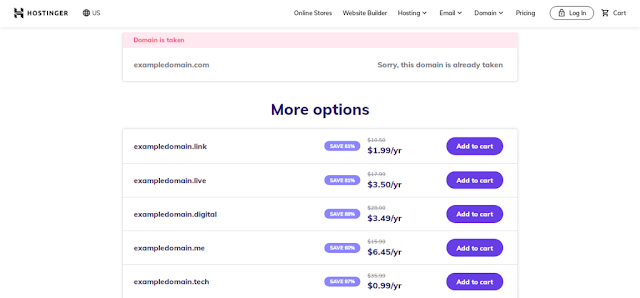Lose weight and earn extra income! Earn up to 1,000 Sweatcoins while you take care of your body.
Our View
If you're struggling to motivate yourself to walk, Sweatcoin might help by giving you Sweatcoins that you can redeem for prizes. I'm a competitive person, so whenever someone throws a carrot in front of me and challenges me to win it, I'll take it. I like the idea of Sweatcoin; I wish they paid in cash instead of tokens or merchandise, and I wish their rewards were more valuable and less elusive.
![Boost your healthy lifestyle and get rewarded with up to 1,000 Sweatcoins for losing weight. Sweatcoin Review [2025]: Don’t Expect Cash in Your Pocket](https://blogger.googleusercontent.com/img/b/R29vZ2xl/AVvXsEjFqXkUeriHAg3JEFD7RbCwGKTa9tETvEEKtVLFawudi6-8T8ibFJkPGV-RaufZNiFHyDOO-kOOLq1wsnhKD1leYgleIrCdu6tUX2ucYMnpQU2qE7OOj2gim2HdYC0RSc30sNv0vhFiwfYBIk40Fm3UBmCQoRUWWsjahG9ha2byERTwg1Ha96P528vn6BEa/w640-h360-rw/sweatcoin%20paypal(1).jpg) |
| Boost your healthy lifestyle and get rewarded with up to 1,000 Sweatcoins for losing weight. |
While I don't consider it a traditional side hustle, it can be a fun way to improve your health and earn fun prizes.
How does Sweatcoin work?
Sweatcoin is a fitness app that rewards you for walking. It pays you for your daily steps in digital currency that you can use to purchase products, earn $SWEAT tokens, or donate to charity. Unfortunately, there's no way to cash out and withdraw your earnings, which I found as a downside as I was really hoping to earn big prizes with my steps.
When you walk and allow the app to track and verify your steps, you earn Sweatcoins, the digital currency. What's most shocking for me is that all you need to sign up is your phone number and to share your location; the app then does the rest. But as I quickly learned, it's not that big of a deal because you don't earn all that much for your daily steps.
The nice thing is that you don't have to have your app on to track your steps because it runs in the background, but I will warn you that it will likely drain your phone battery as it did mine.
Here's another catch. Don't expect your steps to look like those on your Fitbit or Apple watch as it uses its own algorithm to count steps. This means Sweatcoin doesn't track your location or share your information with any third parties, but not all steps will convert to Sweatcoins because the algorithm they use attempts to verify all steps so that phone shakes or car rides don't count as steps.
Featured partner offer
How much can you earn with Sweatcoin?
As you probably guessed, the more you walk, the more you can earn with Sweatcoin, but it's not a lot.
You earn one Sweatcoin for every 1,000 steps, but Sweatcoin charges a 5% fee for using the platform so really every step is worth 0.95 Sweatcoins. However, because the algorithm deducts shakes and bumps from your phone, your steps won't be consistent. For example, one day I walked 10,000 steps and earned 8.9 Sweatcoins and the next I walked 10,000 steps again but only earned 8.1 coins, so it's not consistent.
Sweatcoin claims they are working to make their algorithm more accurate, but for now you have to deal with the inaccuracies.
Sweatcoin has a maximum number of steps you can earn from each day, depending on your plan:
- Free plan: Earn up to 10 Sweatcoins a day.
- Premium plan: Earn unlimited Sweatcoins.
*Note the Premium plan has a cost that changes frequently. You can check the app for the latest cost and savings if you pay annually versus monthly.
Other ways to make money with Sweatcoin
In addition to earning money by walking when using Sweatcoin, you can also make some extra cash from the app if you become an influencer. You'll need to invite 20 unique users to join Sweatcoin using your invite link in order to be eligible to access the influencer hub.
Once you have access to the hub, you can take advantage of available resources, invite more friends, and redeem your rewards for bringing Sweatcoin to new users. These rewards for influencers can be redeemed for cash, but the specific amount of rewards you are eligible for can vary over time and is based on your market.
Redeeming Sweatcoins
Here's the worst part; Sweatcoins cannot be redeemed for cash. You can only use them to obtain physical products or gift cards from one of the app's 600 partners. Some of your redemption options include Audible and Headspace gift certificates. You can also use Sweatcoins to bid on item auctions or build a Sweat wallet with $Sweat tokens.
/images/2023/03/02/sweatcoin_review_-_rewards_out_of_stock.jpg) |
| Innovative incentive program: Earn up to 1,000 Sweatcoins for your steps towards a healthy lifestyle. |
If you would prefer not to redeem Sweatcoins for products that you will use yourself, you can choose one of the donation partners. There are multiple options for charitable donations, including a campaign of the week.
/images/2023/03/02/sweatcoin_review_2-_charity_donation.jpg)
The value each Sweatcoin offers varies depending on which partner you redeem from, and you may have some out-of-pocket costs such as shipping and handling if you redeem for products, which can be a downside.
For example, there was a pair of sunglasses I wanted to use my coins on that was a pretty good deal, but I had to pay $5 shipping. While that's not outrageous, it's still money I had to spend when the app advertises that everything is free.
Honestly, when it came to redeem my Sweatcoins, I was sorely disappointed because most of the offers would take me a long time, we're talking over a year to achieve. I think they do this so that you'll use your coins on other things, which honestly were mostly either discounts from partners or a free month of a monthly subscription box. While that's great to earn, then you're on the hook for a subscription that quite frankly I didn't want. However, one offer that did catch my eye was a free subscription to Calm. I know that's a popular app, so it could be helpful for some people. Since it costs $14.99 a month, it's a good deal.
Most of the physical rewards were so out of reach between the number of steps I would need to take, and the limits the app sets for the free version that the rewards probably wouldn't be available by the time I had enough coins.
For example a pair of wireless headphones was up for grabs at 6,500 Sweatcoins. Since I was earning 8 - 9 Sweatcoins daily, it would take me 722 to 812 days with consistent steps to earn the prize. That's not very attainable in my opinion.
$SWEAT
A newer feature Sweatcoin offers is its $SWEAT token which is a real crypto asset that you earn by walking. You can buy $SWEAT from centralized and decentralized exchanges. You can also mint $SWEAT by having the Sweatcoin and Sweat Wallet apps downloaded and walk 3,000+ steps a day.
The $SWEAT coin is currently worth $0.0063 per SWEAT.
How to make more money with Sweatcoin
To increase your earnings on Sweatcoin, here are some of my tried-and-true tips:
- Walk more. This is the easiest option, as the more verified steps you take, the more Sweatcoins you can earn, but of course, you must deal with the pesky daily limits.
- Bonuses. Take advantage of daily bonuses to earn more. These typically involve watching an ad, walking more, and if you complete all tasks, can spin for more rewards. Don't expect much more than a coin or two as that's all I would get, but something is better than nothing.
- Consider whether a subscription is worth it. If you become a subscriber on the Premium plan, you get rewarded for more steps and can earn double the coins for each step you take.
- Become an influencer and invite others to join Sweatcoin. This can help you to earn rewards not just for walking but for referrals to the platform. The more people you invite, the more cash you can redeem. You can tap into your social network to help you find friends and loved ones to sign up for the app themselves.
- Don't use your battery saver: Sweatcoin now rewards you for indoor steps (this is new), but if you have your battery saver on, it may not catch all your steps. Keep the battery saver off when you're walking so you get credit for every step.
- Get outside: Sweatcoin is more likely to reward you for outdoor steps so try to take as many outdoor walks as possible during the day.
Employing these techniques is one of the simplest ways to maximize your earnings if you're interested in learning how to make money using the Sweatcoin app.











Social Plugin